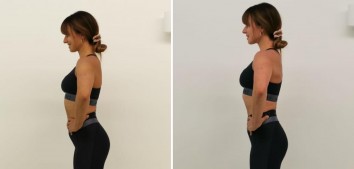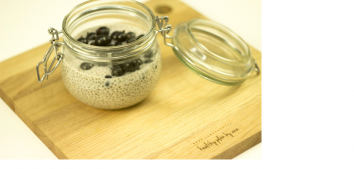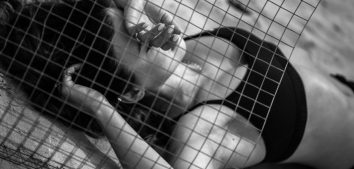
Strengthening Your Pelvic Floor Muscles
Pelvic floor muscles belong to those most important ones in a woman’s body, and at the same time they are the most “exploited” and require special care. Are you after delivery? Are you wondering how to take care of your body and where to start from? No matter if you gave birth naturally or by C-section, you should certainly remain under the care of your physician who will assess your body condition and will tell you when you can return to physical activity.
Usually, it takes about 6 weeks to recover after natural delivery, and about 12 weeks after C-section.
Remember, however, that you can start introducing special, VERY IMPORTANT exercises earlier. Their aim is to strengthen the pelvic floor. It is recommended to implement them about 6-8 hours after a natural delivery, or 12-24 hours after a C-section, before getting out of bed.
It is a comforting fact that the topics of strengthening pelvic floor muscles and rectum abdominis are increasingly discussed. Only a few years ago, many women did not know how important this topic is from the perspective of health and better well-being. What’s more, many women are or were unaware that they are struggling with this problem or with umbilical hernia. Taking care of the pelvic floor muscles will protect you from unpleasant ailments, such as stress incontinence, tension pains, lack of stabilization of the spine, tight and protruding stomach, and even gastrointestinal problems.
What are pelvic floor muscles?
Let me begin with some basic explanation. Pelvic floor muscles are a group of muscles located between the sciatic tumors, coccyx and pubic symphysis. They close the pelvis from below, thus supporting the pelvic organs, i.e. the vagina, uterus, bladder, and rectum.
The role of pelvic floor muscles
- Maintaining the correct position of organs located in the pelvis
- Proper urinary continence
- Stabilizing the torso and spine, i.e. the core – deep muscles
Factors that weaken pelvic floor muscles
- Pregnancy and childbirth – due to hormones and the weight of the developing baby, as well as during childbirth, the pressure of the baby causes stretching of the muscles and the entire pelvic floor
- Sneezing and coughing when it occurs too often and without properly strained muscles
- Obesity
- Lack of physical activity
- Too much physical activity
- Aging of the body – after the age of 50, the muscles age, which increases the severity of the discomfort
Are your pelvic floor muscles weak?
If you have noticed:
- Involuntary passing of urine when coughing, sneezing
- Involuntary urination while laughing
- Involuntary passing of urine during training or running
- Inability to hold urine for a long time
- A protruding belly for a long time after the delivery
- Feeling pain in the perineum or around the pelvis
- Discomfort while having sex and finding no pleasure in it
- Feeling of your organs falling (weight) in your perineum,
then YES, they are!
Your body reflects your lifestyle
Look at your body posture, how you breathe, how you perform everyday life functions, whether you are hunched over. It is important how you get out of bed, how you lift heavy objects, what clothes you wear – all of these daily activities have a huge impact on the pelvic floor muscles. The devil is in the detail! That is why there are women after many pregnancies and births, whose pelvic floor muscles are fine. And there are also those that have never given birth but still suffer from urinary incontinence or organ decline.
Now let’s get down to it! Remember these points before you start working out 🙂
What to start with?
- Proper breathing – breathing especially with the diaphragm. It will definitely be easier for people who have trained before, e.g. martial arts. I will show you individual exercises below. When exhaling, try to tighten the pelvic floor muscles as if you wanted to stop the flow of urine and pull your tail bones up, relax your leg muscles.
- Appropriate movement patterns in the toilet – sounds complicated? Remember to never bear down on the toilet, especially when urinating – this is unnecessary. It causes enormous pressure and load on the pelvic floor muscles, and can cause a lowering of the pelvic floor if used for many years. Relax and breathe, and your muscles will do their job on their own.
- Following the advice of physiotherapist Basia Smirnow-Kurp, you should sit straight up while sneezing and coughing, and you can additionally turn your head sideways, raise your hand and hide your mouth in the bend of the elbow. You will thus facilitate the pelvic floor muscles with an automatic tension that balances the resulting intra-abdominal pressure.
- Performing everyday activities properly – sitting and getting up, going to bed and getting out of it is of great importance. Stand back to the chair, push your buttocks back, stretch the pelvic floor slightly and exhale, using the strength of your leg muscles, slowly fall onto the chair. Only then relax your pelvic floor and thigh muscles. Do the opposite while standing up. Move to the edge of the chair, lean forward, stretch the pelvic floor slightly and bounce off your heels to stand up. If you get up from lying on your back, first turn to the side, then get up, pushing your up using your hand.
- Proper lifting – I always pay special attention to this point both during everyday life functions and during training. Remember how to bend down and how to maintain the correct posture when lifting things. Stand in a natural posture, feet to the width of the hips, bend your knees slightly and keep your back straight while bending down, slightly tighten the bottom of the pelvis, the torso extended forward, and the buttocks backward. Always bend over and get up with exhalation, you also activate the deep muscles of the torso that stabilize the spine. Regardless of whether you pick up a purse from the ground or a kettle during your workout, or your little baby – always keep the weight close to your body.
- Appropriate clothes – do not wear tight-fitting clothes or too small trousers (do not try to squeeze into tight jeans from before pregnancy;))
- Getting up from a lying position – always lie down and get up while on your side. I wrote about it HERE.
When you plan to return to physical activity, remember to strengthen your deep muscles, i.e. the core, which envelop and protect your other muscles as well as strengthen and improve body posture. You won’t make the expected progress without this step.
Remember that with the problem of weakening of the pelvic floor muscles or abdominal straight muscle dehiscence, you should contact a specialist: a doctor, physiotherapist or urogynecologist. I also truly recommend consulting an osteopath – it has helped me a lot.
A professional opinion:
I asked Basia Smirnow-Kurp, a physiotherapist who specializes in this topic, to share her opinion here.
Our physical and postural habits in everyday life affect how our muscles function. Some are stretched and weak (like abs), others shortened and tense. What I often see in young mothers is tense oblique muscles that take on the function of weakened deep muscles a little. Sometimes this stabilization function is taken by the pelvic floor muscles, which also results in their excessive tension, and this is as much a problem as their weakness. We need balance in everything, so that each muscle can perform the functions for which it was created.
Due to postural changes which occur during pregnancy, such as pelvic anterior tilt, the sciatic shin muscles are very often shortened. These are calf muscles and double-headed thigh muscles. This leads to a sort of a vicious circle. Changing posture causes muscle shortening, tension and weakness. In turn, shortened and tense muscles prevent the return to the neutral position of e.g. pelvis or shoulders.
The bad news is that, unfortunately, there is no single solution for everyone. Each of us tightens something different and in a different way. What’s more, sometimes you need to strengthen something else before you start to stretch and relax contracted muscles. The body gets used to the way we use it. It adapts instantly to the most-used position during the day. If the strained muscles of the sciatic-shin group take over the stabilization of the body, then before we relax them and deprive the body of this stabilization, it is worth rebuilding it elsewhere. I see no other way to work on the body here than individually, with a physiotherapist. Despite my great faith in online education and training, they will not replace rehabilitation or therapy.
The consequence of the lack of mobility and tense muscles will be suboptimal (or bad) movement patterns. Although there is no one right way to make a given move, because each of us is different, undoubtedly some movements will put more strain on body structures, such as the spine, pelvic floor or just the stomach, while others will protect them more.
In addition, there is no single valid movement pattern, provided that we give our body a chance to move in different ways. Meanwhile, we usually go the easy way and repeat the same movement patterns over and over again. Our body is created for movement and it is movement that keeps it healthy.
Look at how you carry your baby, or how you collect toys scattered across the floor and think how this affects your spine, stomach, and pelvic floor.

Once again let me remind you – take care of your everyday habits!
- Posture
- Avoid lifting
- Proper toilet habits
- Getting up from your back
What affects the way our bellies work?
The way your bellies work and conducting effective therapy depends on coping with:
- Unmobilized scars – all, especially those after C-section and perineal incision / rupture
- Problems with the digestive system – bloating, gas, food intolerance
- Emotional issues, stress – a very big topic. I have already seen many times that emotional problems (and which young mother does not have them!) or problems with self-esteem block the progress of therapy
- Hormonal issues – related to pregnancy and lactation, but also for example thyroid problems or autoimmune diseases
- Genetic predisposition
And probably a few more.
I hope that I managed to convince you a little that the problem with the abdomen after delivery is quite complex and it does not boil down to the separation of the abdominal muscles and transverse muscle exercises. Unfortunately, there is no one exercise that is good for everyone. On a more positive note I can say that if you take care of the problem properly, you have the chance to “fix” your body from scratch, so that you are strong and fit, even more than before pregnancy 🙂

Exercises
It’s time to use all this theory in practice. I’ll show you below a range of exercises that are perfect for young mothers, but not only 🙂 Try to perform the following sequence of exercises in 2 or 3 series for 4 days a week.
Exercise 1
Get down on all fours. Place your hands on the floor under your shoulders, keep legs at a straight angle. Take a deep breath while slowly lifting your left leg and right arm parallel to the floor. Hold it for a moment. Then go back to the starting position while breathing out. Switch sides and continue with 5 reps for each side.

Exercise 2
Lie down with your arms extended sideways and palms down. Keep your feet firmly on the ground, lift your hips while breathing in. Keep your abs tight (try to pull your navel in toward the spine) and lower your hips while breathing out. Repeat 5 times.

Exercise 3
Lie down and lift your legs at a straight angle, place your hands on your knees. Push your hands against the knees and resist with your knees against your hands to the maximum. Work your deep muscles and go back to the starting position when breathing out, then pull your knees towards the torso. Relax your head, neck and shoulders on the ground, focusing only on the deep muscles in your stomach. Make sure that this is not a feeling of tension. Breathe in and out deeply ten times, paying attention to proper performance.


Exercise 4
Again, lie down with your legs at a straight angle, lift your arms straight up with your fingers toward the ceiling. Take a deep breath while slowly extending your left leg in front of you and right arm over your head. Stop when both your arm and leg are just above the ground. Breathe out when your go back to the starting position. Switch sides and continue with 5 reps for each side.

Exercise 5
Bend your knees at a straight angle and keep your body aligned from shoulders to your knees. Lean on your forearm and extend your upper arm toward the ceiling. Tighten your deep muscles (pull the navel in toward your spine) and breathe deeply. Then straighten your upper leg. Hold this pose in the properly for ten deep breaths and then reapeat for the other side.


Exercise 6
Sit down comfortably. Place one hand on the stomach and the other one on your hip. Sit straight up and extend your torso. Move your head toward the ceiling. Hold the pose properly and take a deep breath while letting your abs relax completely. Breathe out and push your stomach forward trying to imagine that a gap between your stomach is closing in. You can even place your fingers directly on the muscle separation under your navel to pay attention to this exact place where the muscles must work the hardest. Continue with breathing in and relaxing for 10 deep breaths.










Comments No Comments
Join the discussion…